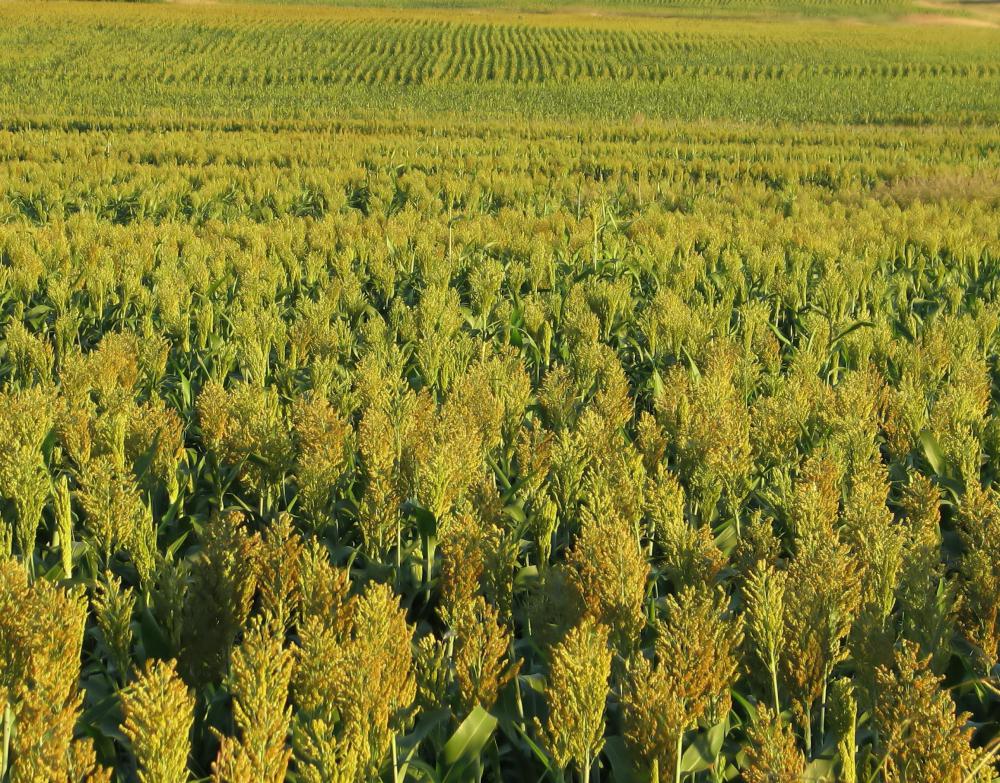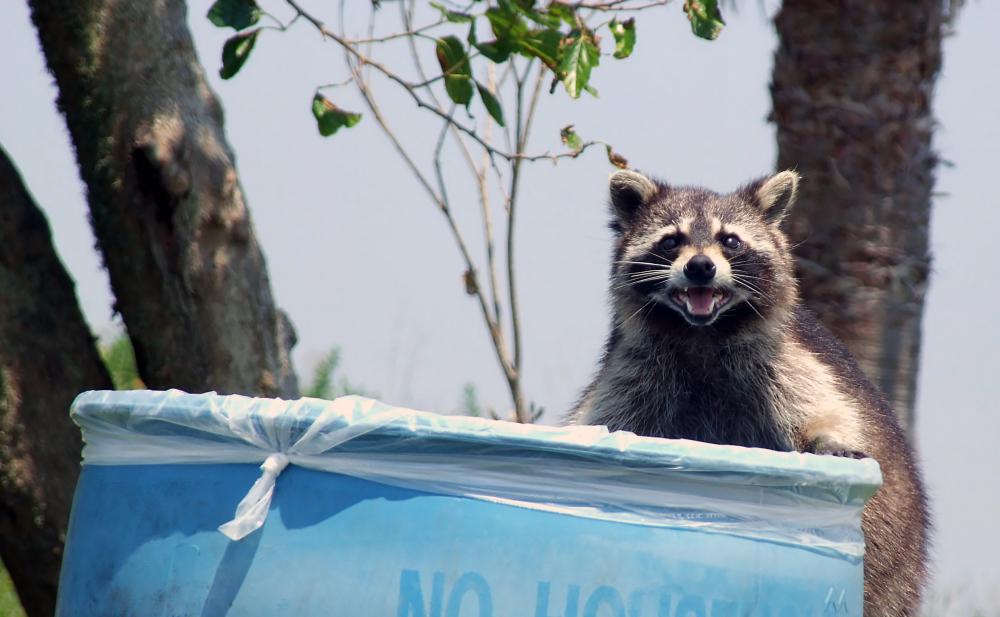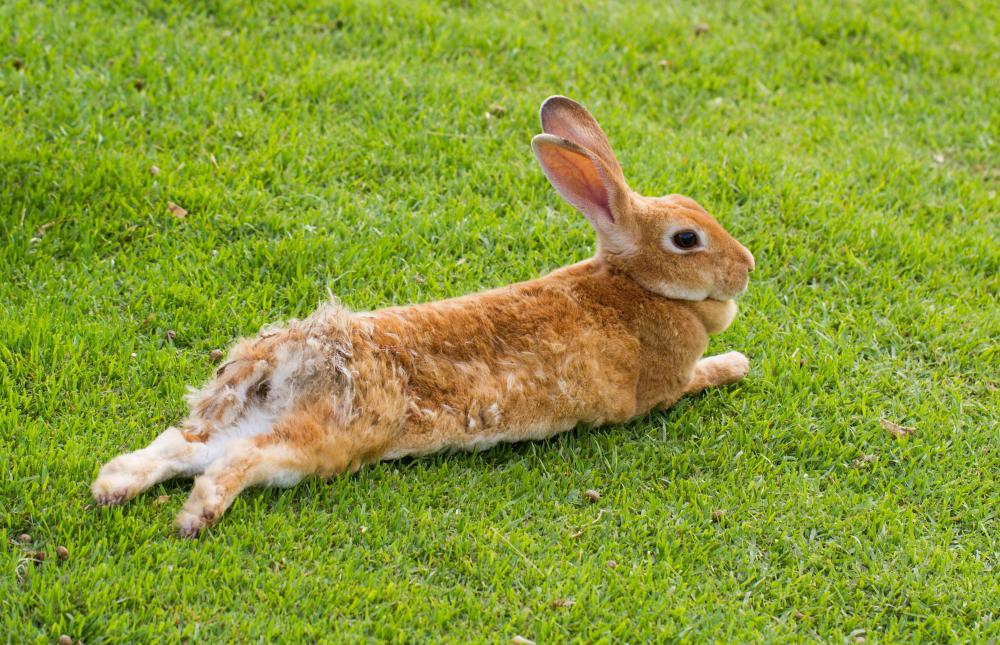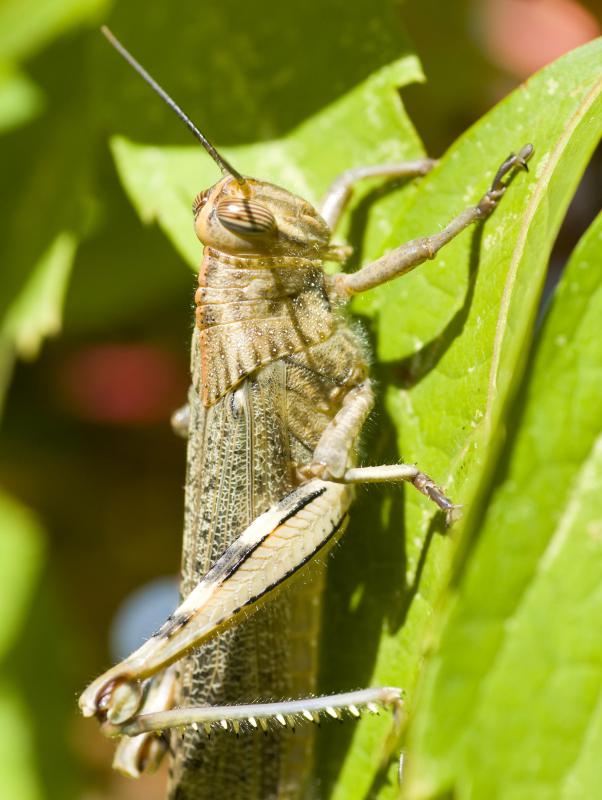At AllThingsNature, we're committed to delivering accurate, trustworthy information. Our expert-authored content is rigorously fact-checked and sourced from credible authorities. Discover how we uphold the highest standards in providing you with reliable knowledge.
What Are the Different Types of Crop Pests?
Pests are some of the most common crop problems, and they can come in several different forms. Insects are the most common and destructive, but mammals, like mice and raccoons, are also be considered crop pests in some areas. Birds are another example of a crop pest, since they can damage plants by eating seeds and fruits as well as by hunting for insects hidden in the plants.
Crop plants are those plants that are grown specifically for human consumption or other use. A crop pest is considered to be any type of creature that can damage a crop plant. Some of these pests may even destroy entire fields of crop plants in very short periods of time.

Insects can often be found on the leaves, stems, and flowers of the plants. Many insects will also eat the fruits or vegetables of crop plants, but some of these crop pests can destroy the plants before they are even able to produce any fruits or vegetables. Some insects will eat nearly any type of plant, while others will only eat certain plants; cabbage worms, for instance, are often only seen in cabbage plants and other cole crops, like broccoli and mustard plants.

To control insects on crop plants, many gardeners and farmers use chemical pesticides. Many pesticides are also toxic, however, and some studies have shown that these substances can be dangerous, even in very small quantities. Other gardeners and farmers use safer organic methods to get rid of these crop pests.
Several different animals can also be crop pests as well. Mice can often be found in corn fields, for instance, where they chew on corn stalks as well as the ears of corn. To get rid of mice, farmers can either trap them or poison them. Larger mammals, like raccoons and rabbits, might also be pests in many rural and urban vegetable gardens.

Birds can also cause an extensive amount of damage to some types of crops. Berries and seeds are generally included in the diet of many birds, including crows, and sunflower farmers are particularly plagued by seed-eating birds. Scarecrows are sometimes effective for getting rid of crop pests like crows, but many birds are not frightened away by these stationary objects. Instead, most farmers hang pie pans or CDs on strings, since shiny moving objects are generally more effective bird deterrents.
Frequently Asked Questions
What are the main categories of crop pests?

Crop pests are typically categorized into insects, weeds, rodents, birds, nematodes, and pathogens. Insects like aphids and caterpillars can directly damage crops by feeding on them. Weeds compete with crops for nutrients and sunlight, while rodents and birds may consume seeds and fruits. Nematodes affect root systems, and pathogens can cause diseases that weaken or kill plants.
How do insect pests affect crop yields?

Insect pests can significantly reduce crop yields by damaging leaves, stems, fruits, and roots, which impairs photosynthesis and nutrient uptake. For instance, the fall armyworm, which feeds on more than 80 plant species, can cause substantial losses in maize, with yield reductions of up to 73% reported in Africa, according to the Centre for Agriculture and Bioscience International (CABI).
What role do nematodes play as crop pests?

Nematodes, particularly root-knot nematodes, invade plant roots, causing the formation of galls that disrupt the plant's ability to absorb water and nutrients. This can lead to stunted growth and reduced yields. The United Nations Food and Agriculture Organization (FAO) estimates that nematodes cause global crop losses of about 12%, highlighting their impact on agriculture.
Can you explain how weeds are considered pests in agriculture?

Weeds are considered pests because they compete with crops for essential resources like light, space, water, and nutrients. This competition can severely limit crop growth and yield. According to the Weed Science Society of America, weeds are the major cause of crop losses in the U.S., accounting for approximately $33 billion in losses annually.
What diseases are caused by pathogenic crop pests, and how do they spread?
Pathogenic crop pests cause diseases such as blights, rusts, and wilts. These diseases can spread through spores carried by wind, water, insects, or contaminated tools and machinery. For example, late blight caused by the pathogen Phytophthora infestans led to the Irish Potato Famine in the 1840s and continues to affect potato and tomato crops worldwide.
How do birds act as crop pests, and what damage do they cause?
Birds can act as crop pests by feeding on seeds, sprouts, and fruits, leading to direct loss of yield. They can also damage crops indirectly by foraging for insects and worms, trampling plants in the process. Grain crops like rice and wheat are particularly vulnerable, with some reports suggesting birds can consume up to 10% of a crop.
AS FEATURED ON:
AS FEATURED ON:

















Discussion Comments
I eat organic when possible too Talentryto. Not only do I feel like my food is safer, I also think that organic fruits and vegetables have better flavor than the non-organic varieties.
I think that controlling crop pests with organic means is definitely much safer, because we still don't know all of the ramifications of using chemical pesticides. For this reason, I try to eat organic fruits and vegetables whenever they are available.
Post your comments